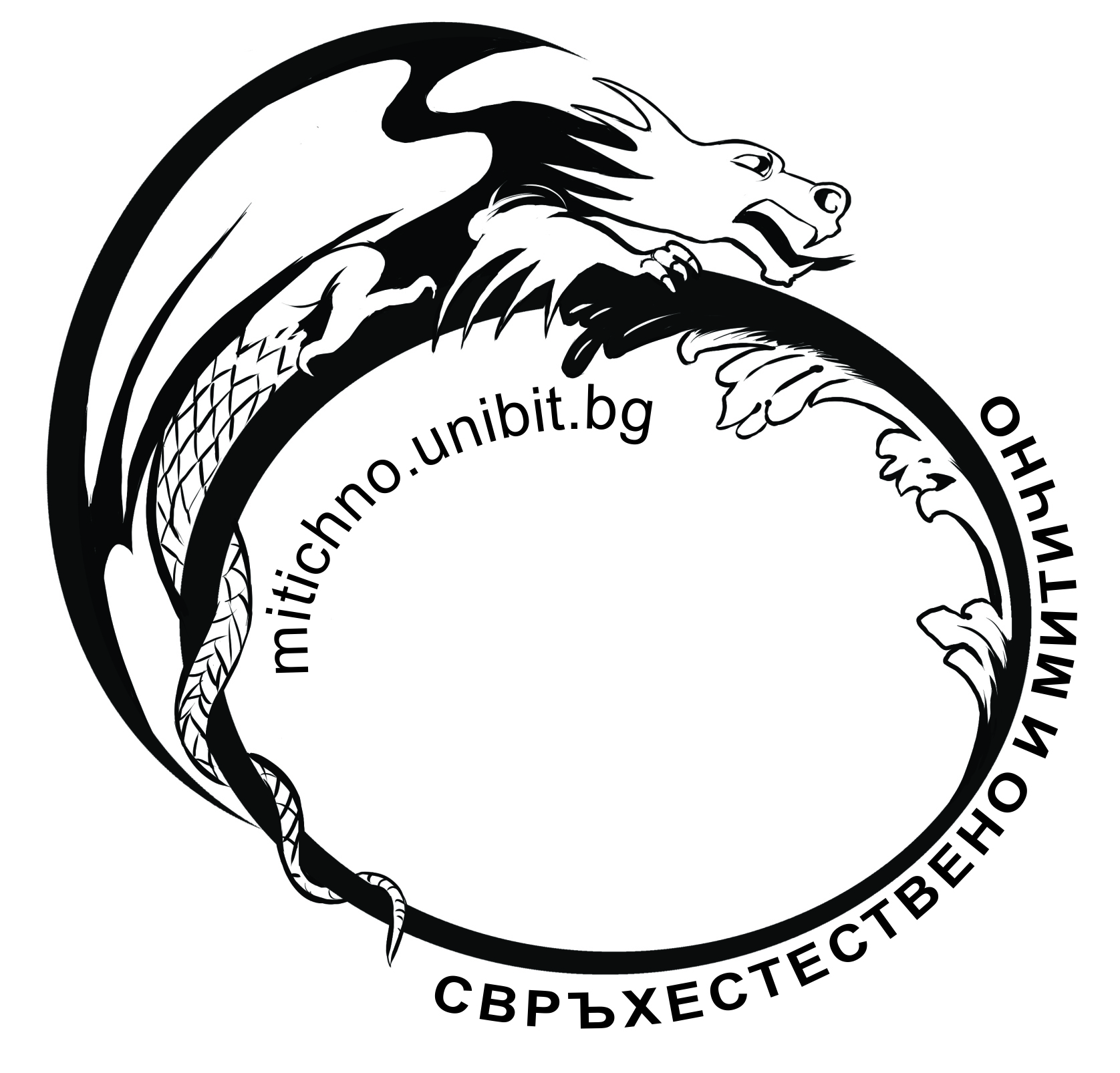THE VISIBLE/INVISIBLE WORLD DICHOTOMY ACCORDING TO THE BULGARIAN FOLKLORIST AND ETHNOGRAPHER DIMITAR MARINOV // ДИХОТОМИЯТА ВИДИМ/НЕВИДИМ СВЯТ СПОРЕД БЪЛГАРСКИЯФОЛКЛОРИСТ И ЕТНОГРАФ ДИМИТЪР МАРИНОВ
Velev, V., Debruyne, N. (2024). THE VISIBLE/INVISIBLE WORLD DICHOTOMY ACCORDING TO THE BULGARIAN FOLKLORIST AND ETHNOGRAPHER DIMITAR MARINOV. KNOWLEDGE – International Journal , 63(5), 613–619. Retrieved from https://ikm.mk/ojs/index.php/kij/article/view/6745
Abstract: Fundamental for the knowledge of Bulgarian folk culture are the works of the famous scholar and public figure Dimitar Marinov. From 1875 he began extensive collecting activities of folklore and ethnographic materials in Northwestern Bulgaria (Vidin, Lom): he recorded folk beliefs, rites, rituals, typical practices of Bulgarian common law. At the end of the 19th century Marinov promulgated the collected materials in a series of five books Living Oldness, a kind of encyclopaedia of the thinking, sensuality and cultural communication code of the Bulgarians over the centuries. For the purposes of this paper, the emphasis will be placed on one of the books, People’s Faith, because Dimitar Marinov presents Bulgarian folk cosmogony through the dichotomy between the visible and the invisible world. In People’s Faith the visible world, according to Dimitar Marinov’s interpretation, can be presented as distant and close. The distant visible world includes celestial bodies and aerial phenomena, while the near visible world includes earth, water and fire, as well as flora and fauna, material culture and the human concept. In turn, the invisible world includes the understandings of its order (God, angels, devil, etc.), diseases are included here, but also supernatural beings. The continuity between the visible and the invisible world, the notions of dynamics and development typify the nature of mythological images, with an emphasis on their material being. Of interest is the metamorphic state of circumstances and supernatural characters pointed out by Dimitar Marinov-many of the beings from the invisible world have their existence in the visible world. A striking example are the samadivas and samovils, witches and vampirites, dragons and dragonesses.
Keywords: visible world, invisible world, Dimitar Marinov, supernatural beings, Bulgarian folk cultureД
Резюме: Основополагащи за знанието за българската народна култура са трудовете на известния книжовник и общественик Димитър Маринов. От 1875 г. той започва мащабна събирателска дейност в Северозападна България (Видин, Лом) на фолклорни и етнографски материали: записва народни поверия, обреди, ритуали, характерни практики на българското обичайно право. В края на 19 век Маринов обнародва събраните материали в поредицата от пет книги-„Жива старина“, своеобразна енциклопедия за мисленето, чувствеността и културния комуникационен код на българина през вековете. За целите на настоящата работа акцентът ще бъде поставен върху една от книгите -„Народна вяра“, защото в нея Димитър Маринов представя българската народна космогония посредством дихотомията между видимия и невидимия свят. В „Народна вяра“ видимият свят, според трактовката на Димитър Маринов, може да бъде представен като далечен и близък. Към далечния видим свят спадат небесните тела и въздушните явления, докато близкият видим свят включва земята, водата и огъня, както флората и фауната, веществената култура и понятието за човека. На свой ред , невидимият свят включва разбиранията за неговата подредба (Бог, ангели, дявол и др.), тук се включват болестите, но и свръхестествени същества. Континуитетът между видимия и невидимия свят, представите за динамика и развитие типологизират природата на митологичните образи, с подчертаване на тяхното веществено битие. Интерес представлява посоченото от Димитър Маринов метаморфозно състояние на обстоятелствата и свръхестествените персонажи-голяма част от съществата от невидимия свят имат свое битие и във видимия свят. Ярък пример са самодивите и самовилите, вещиците и вампиритe, змейовете и змеицинте.
Ключови думи: видим свят, невидим свят, Димитър Маринов, свърестествени същества, българска народна култура
Пълният текст можете да видите ТУК
Full text – HERE
SUPERNATURAL FORCES AND MITHOLOGICAL ELEMENT IN BULGARIAN AND ITALIAN MITHOLOGICAL IDEAS: COMPARISON AND ANALOGIES OF SELECTED IMAGES
Velev. V. (2024) Supernatural forces and mythological element in Bulgarian and Italian mythological ideas: comparison and analogies of selected images – In. Modern dimensions in the European educational and research area. Vol. 12 – Proceedings with Papers of the Eighteenth International Traveling Seminar of ULSIT “Modern Dimensions in the European Educational and Research Area. Bulgarian-Sicilian Cultural Communication” – 2nd – 7th June 2024. University of Messina – Sicily, Italy. Academic Publisher “Za bukvite – O pismeneh”. Sofia, 2024, pp. 108-115. ISSN 2367-7988
Abstract: The mythological conceptions of different cultures, apart from their specificities, often have their similarities, which are sometimes even more than the differences. Mythology is rich in supernatural beings that reflect the beliefs and cultural characteristics of a people. In this context, Bulgarian and Italian mythology offer interesting analogies and similarities in their supernatural entities that intertwine with the customs, beliefs, and folklore of their societies. A first glance reveals that Bulgarian and Italian mythologies have rich traditions of supernatural forces and mythological elements that have shaped their cultures and narratives over the centuries. And as noted, although each mythology has its own unique characteristics, there are also similarities and shared motifs between them. In the present material, based on various studies, an attempt will be made for a brief comparison and general analysis of the similarities and differences of some of the most common characters existing in the Bulgarian and Italian folk representations, which are not only preserved, but still alive today.
Full text – HERE
METAMORPHOSES OF THE SUPERNATURAL IN THE ACHIEVEMENT OF MODERN IDEAS
Dobreva, V., Buzhashka, B. (2025) METAMORPHOSES OF THE SUPERNATURAL IN THE ACHIEVEMENT OF MODERN IDEAS. – In. KNOWLEDGE – International Journal, Vol.69.5, 883-886 –
Резюме: През декември 1856 г. в гр.Лом, Северозападна България, учителят Кръстьо Пишурка поставя мелодрамата „Многострадална Геновева“. Това е второто представление по българските земи от периода на Българското възраждане през ХІХ век, след като в Шумен се изиграва побългарената от учителя Сава Доброплодни комедия „Михал“. Представлението в Лом е посрещнато с огромен възторг от публиката и през следващите десетилетия мелодрамата „Многострадална Геновева“ ще се играе в почти всички български територии от самодейни трупи актьори, превръщайки се в едно от най-значимите театрални явления в новата българска култура. Пиесата „Многострадална Геновева“ е преведена на български език от сръбски език. Сюжетът е взаимстван от средновековна легенда, в която свръхестественото ( чудото) играе основополагаща роля. Причините, високо образованият за времето си книжовник Кръстьо Пишурка да се ориентира към тази пиеса, най-вероятно са свързани със състоянието на публиката. Тепърва българският зрител ще открива изкуството на театъра и ще се възпитава в естетика и усет за художествена условност. В периода на 50-те години на ХІХ век публиката все още живее в среда, в която свръхестественото се приема за непосредствена реалност. Допълнително, усещането за присъствието на свръхестестево се подсилва от народните вярвания, от житийната литература, от празниците, обредите и т.н. Анализът на сюжета, на актантния модел, фокусирането върху композиционни и значещи елементи в мелодрамата „Многострадалната Геновева“ показва как в рамките на традиционните представи, изградени върху действени свръхестествени представи и образи се зараждат модерните идеи и съдържание.
Пълният текст на проучването можете да прочетете ТУК и ТУК
ASPECTS OF THE SUPERNATURAL ACCORDING TO FOLK BELIEF IN NORTHWESTERN BULGARIA (ON MATERIALS FROM DIMITAR MARINOV’S WORK „FOLK FAITH“)
Velev. V., Bogova, H. (2025) ASPECTS OF THE SUPERNATURAL ACCORDING TO FOLK BELIEF IN NORTHWESTERN BULGARIA (ON MATERIALS FROM DIMITAR MARINOV’S WORK „FOLK FAITH“) – In. KNOWLEDGE – International Journal. Vol.69.1, 391-395
Резюме: Разбирането за свърестественото в българската народна култура кореспондира с представите за съществуването на невидим свят, пространството за проява на свръхестественото. В систематизираните от българския етнограф Димитър Маринов фолклорни разкази, предимно от Северозападна България, за народните представи за нечовешки същества, впечатление прави синтезът между езически вярвания и християнски образи и наративи, симптоматични за процесите на фолклоризиране на християнството. Разбирането за естествения свят във фолклора се пречупва през човешката сетивна способност да възприема външния вид, формата, на предмета. Докато, свръхестественият свят се трактува като недостижим за човешкото зрение и по тази причина той е невидим и се характеризира с нечовешкия си характер, т.е. с липса на ясна видима форма. Факт е обаче, че народната култура обозначава и видимия, и невидимия свят с категорията истиност и реалност, Но невидимия свят се трактува като свръхестествена реалност, доминираща над живота на естествения свят и над съдбата на хората. В невидимия, свръхестествен свят, съществуват създания, олицетворяващи аксиологични и етични стойности, свидетелстващи за дуалистични традиции, усвоени от народната култура. Сред тях интерес представляват описанията на Бог, ангелите и дяволите, чиито образи, подробно описани в труда на Димитър Маринов, са показателни за развитието и вътрешните елементи на българската народна култура.
Пълният текст можете да прочетете ТУК и ТУК
Между самодивите и сенките: Свръхестественото в културната памет на Северозападна България
Велев, В. (2025) Публична лекция „Между самодивите и сенките: Свръхестественото в културната памет на Северозападна България“ (19 май 2025 г., УниБИТ – 1, зала 206)
Заглавието препраща към два ключови аспекта на свръхестественото в народните представи – от една страна, самодивите (известни и като самовили) като ярък и добре разпознаваем образ на митичното, символ на загадъчната женска сила и магическото присъствие в природата; и от друга – сенките, които носят усещането за неясното и невидимото, за страховете и вярванията, останали без ясна форма, но живеещи в колективната памет като предчувствия, забрани и необясними страхове. Именно между тези два полюса – видимото и невидимото, разказаното и премълчаното – се разгръща темата на лекцията.
Ще бъдат разгледани образите на самодивите / самовилите, змейовете, караконджиите и други митични същества, както и тяхната роля в социалния живот и моралния кодекс на общностите. Ще проследим как тези представи са се трансформирали през времето – от древните езически корени, през християнската символика, до съвременните им интерпретации в популярната култура.
Лекцията представя и резултати от теренни и архивни проучвания, проведени в рамките на научния проект „Интердисциплинарно изследване върху вярванията и представите за свръхестествените и митичните сили, съхранени в културната памет на Северозападна България, и тяхната трансмисия през времето“. Това е среща между науката и живата памет на народа, между древния страх и съвременното любопитство към „онова, което не се вижда, но се помни“ – между самодивите и сенките.
Пълният текст на лекцията можете да видите ТУК
Понятията „мит“ и „свръхестествено“ в съвременната българска литература.
Томова, Н. (2025) Понятията „мит“ и „свръхестествено“ в съвременната българска литература. – В. Съвременни измерения на европейското образователно и научно пространство. Българо-турски научни общувания. Сборник с доклади от XIX Международен пътуващ семинар на УниБИТ проведен в гр. Айвалък, Турция, 25-31 май 2025 г. АИ „За буквите – О Писменехь“. ISSN 2367-7988, с.
Резюме: Разглежда начините, по които понятията „мит“ и „свръхестествено“ се проявяват в съвременната българска литература, като проследява тяхната еволюция и начините, по които се интерпретират от съвременните автори. Фокусът е върху взаимодействието между традиционните митологични мотиви и тяхната трансформация в нови литературни контексти. Изследва се как митът служи като средство за интерпретация на социалната и културната реалност, както и ролята на свръхестественото в изграждането на художествените светове. Подчертава се значението на тези елементи за формирането на националната идентичност и съвременния литературен дискурс в България.
Пълният текст можете да видите ТУК

